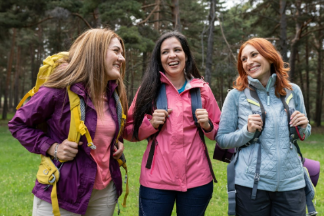As a Texan, you won’t let the rising temperatures keep you from doing what you love, including your exercise routine. However, working out can increase your body temperature; when combined with high external temperatures, this can lead to heat exhaustion and even heat stroke, a condition that requires immediate medical attention. The good news: with a few small tweaks to your regular exercise routine, not even the Texas heat can stop you.
Dress for Success
Heavy, dark clothes can trap heat around your body, making it harder to cool off, so opt for light, breathable fabrics when choosing your outfit. Dry-fit clothes can even wick sweat away from your body. If you’re unsure about the best clothing type for you, an associate at a fitness store can help you find the right pieces.
Drink to Your Health
The hotter you are, the more you sweat, which means you lose water more quickly. To avoid dehydration, bring plenty of water with you when you work out and take several breaks to hydrate. If you’re running, plan your route around places where you can fill up your water bottle.
Snack Simply
Your body uses a lot of energy to digest foods high in protein or fat, and this extra energy expenditure can increase your body temperature even more when you’re out in the heat. If you need a snack before your workout, opt for light, fresh foods rich in water, such as apples, lettuce, watermelon, or cucumbers.
Be Flexible
When planning your workout, know that you won’t be able to train as hard or as long as you usually can in cooler temperatures. Before exercising, determine whether you will scale back the duration or intensity—or both. If you begin to feel unwell while working out, stop immediately, find a location with air conditioning or shade where you can cool off, and drink plenty of water.
Time It Right
In the middle of the day, the sun is right above you, and the temperatures are the highest. If you’re used to a midday exercise session, try switching your workout to earlier in the morning or later in the evening. It won’t be quite as hot outside, and you won’t be putting as much stress on your body.
If you begin to feel any symptoms of heat stroke while exercising—including warm skin with a lack of sweat, dizziness, headache, fever, nausea, vomiting, and rapid breathing and heart rate —call 911 immediately and move to a cool place. Locate your nearest St. Joseph Health ER ahead of time. Each facility in our network of emergency rooms throughout the Brazos Valley follows the exemplary standards and treatment protocols of St. Joseph Health’s Emergency & Trauma Center, the highest-rated trauma center in a nine-county area.
For additional tips on improving your athletic performance this summer, check out the St. Joseph Health Run Club and download one of our free training guides today!
Sources:
Academy of Nutrition & Dietetics | Exercise Safely in Hot Weather
Men's Health | 6 Things Doctors Wish You Knew About Exercising In the Heat





